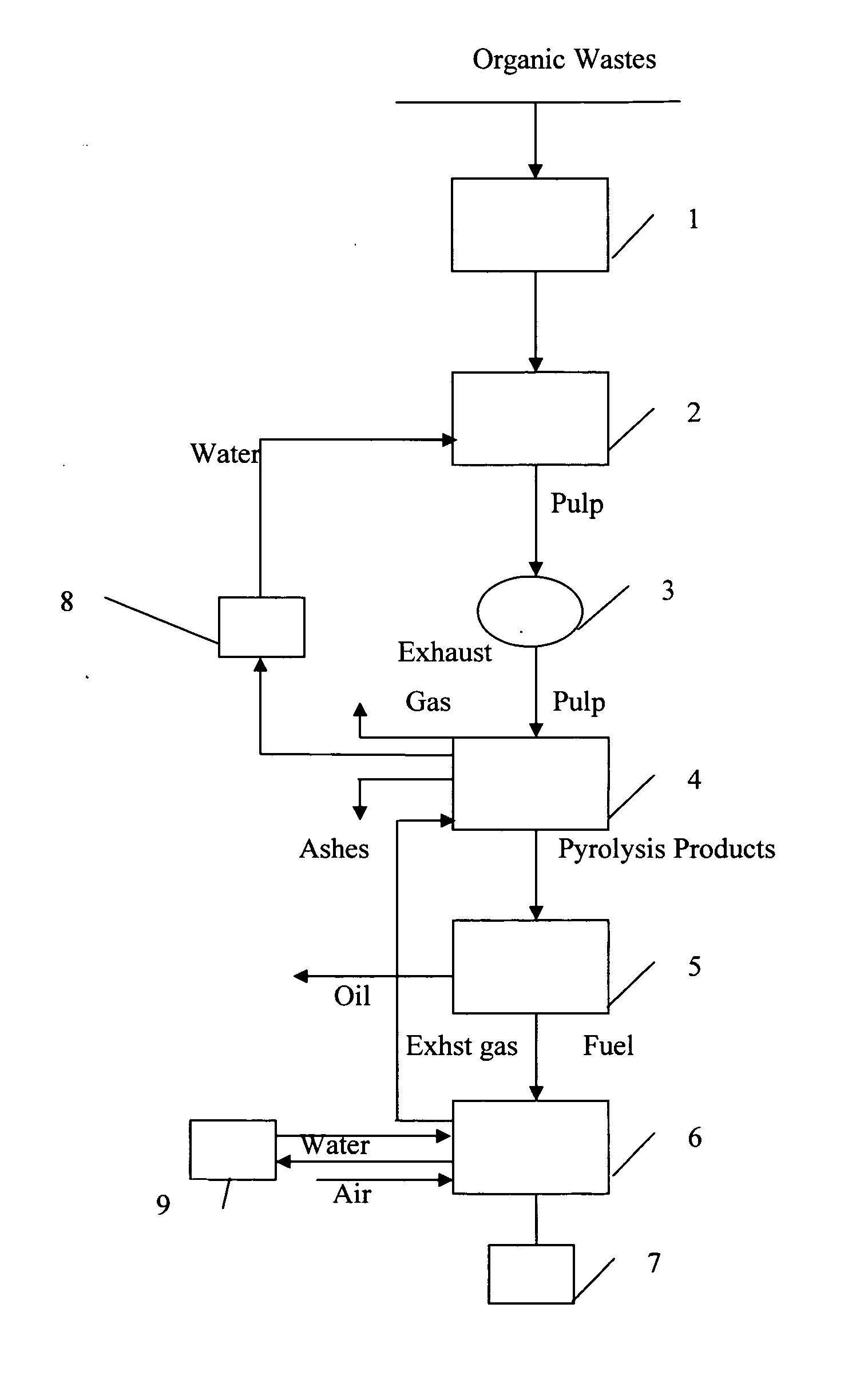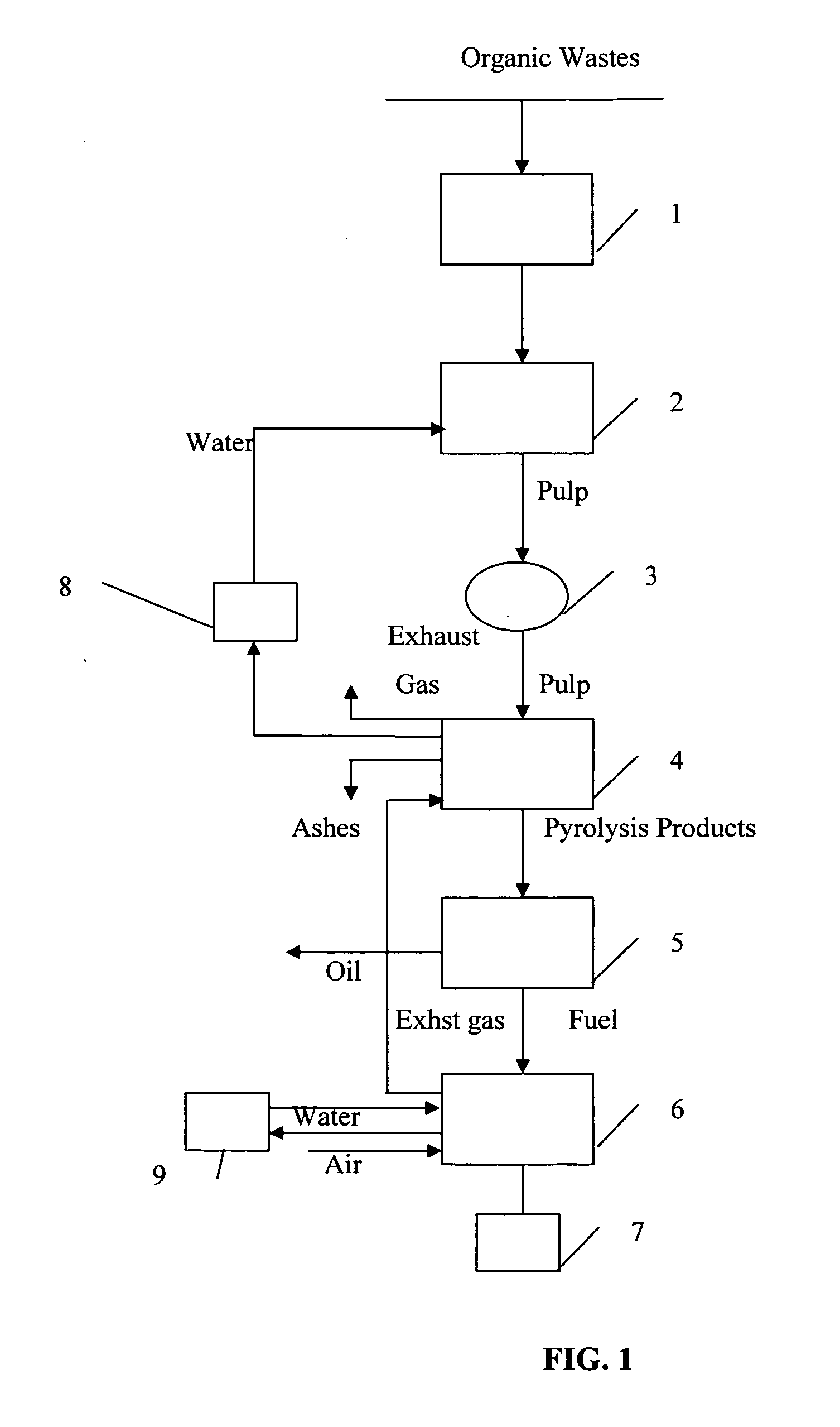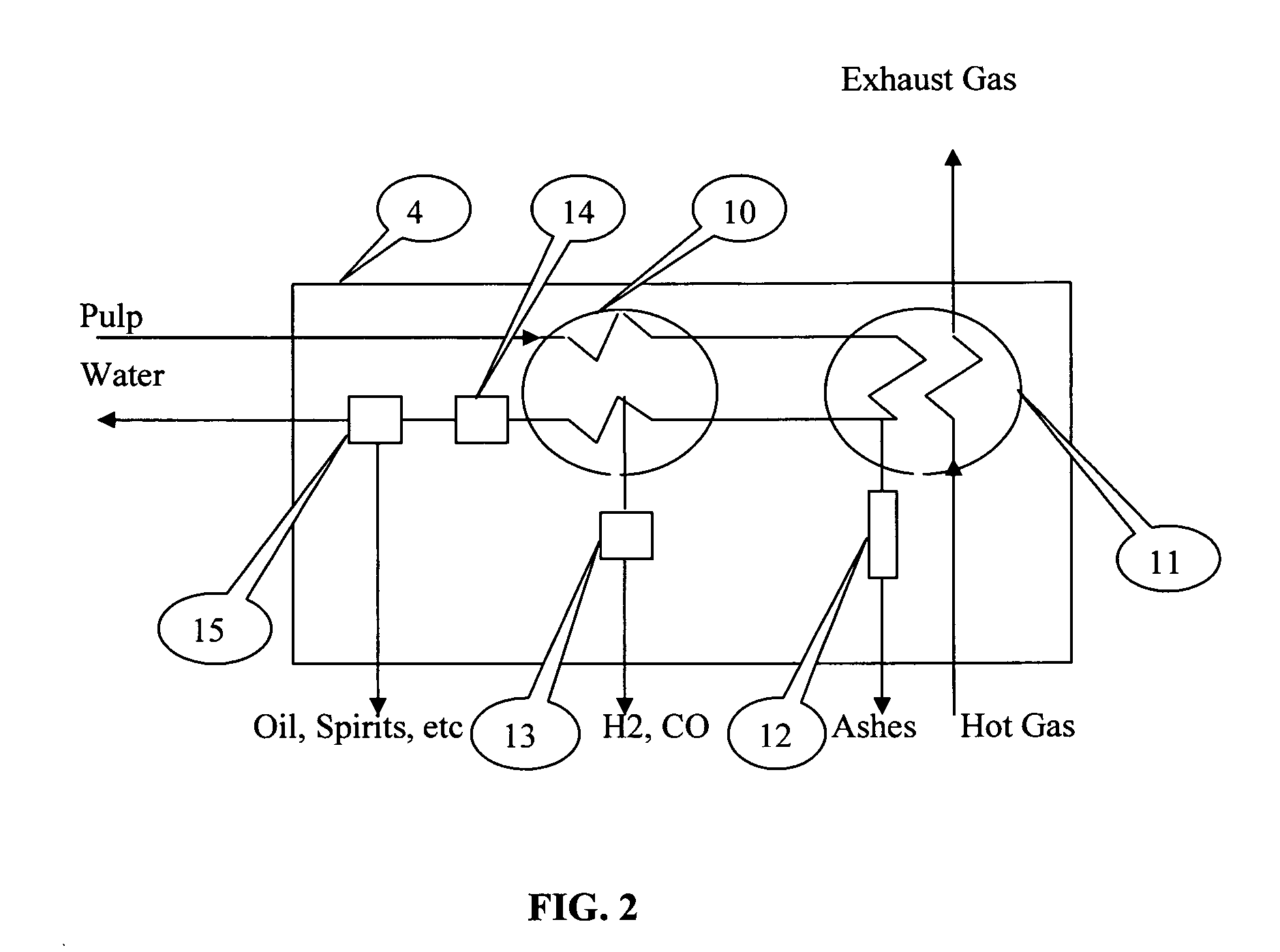Method for processing organic waste and a device for carrying out said method
a technology of organic waste and processing method, which is applied in the direction of waste based fuel, solid fuel production, liquid hydrocarbon mixture production, etc., can solve the problems of low efficiency of heat transfer from hot gas to raw materials being processed, low calorific value of gas generator, and limited usability for synthesis of motor fuels. achieve the effect of increasing the economic and environmental performance of pyrolysis technology
- Summary
- Abstract
- Description
- Claims
- Application Information
AI Technical Summary
Benefits of technology
Problems solved by technology
Method used
Image
Examples
example 1
[0043]The waste is sawdust with a moisture of 50%. Suppose one needs to recycle 0.1 kg of sawdust per second (or 6 kg of sawdust per minute, or 360 kg of sawdust per hour or 8.64 tons of sawdust per day). Let's assume the pulp has a 90% moisture content.
[0044]Thusly:
1) Taking into account the calorific value of combustible mass of wood is about 20 MJ / kg, and provided that all the energy of wood will be converted into the heat energy, the total thermal power of the power-conversion installation is:
Wt=0.1 (kg / s)×0.5×20 (MJ / kg)=1 MW of thermal power.
2) Thermal energy of the fuel mass will be largely realized in the form of combustion energy derived from the pyrolysis of combustible gases. With the assumption that the efficiency of converting the thermal energy into electric energy equals to 0.2, the generated electric power is:
We=0.2×Wt=0.2 MW.
3) When the wood ash content is equal to 0.5% of the fuel mass, the formation of ash will occur at a rate of:
Ash=0.1 (kg / s)×0.5×0.005=0.00025 (k...
example 2
[0051]Processing 100 tons of poultry manure per day with a humidity of 95%.
[0052]Making calculations similar to the ones in Example 1, with a calorific value of combustible mass of manure being 20 MJ / kg, taking the amount of minerals in the manure of 5% by dry weight, one gets:
Thermal power:
Wt=100000×20×0.05 / (24×3600)=1.16 MW;
[0053]Electric power (with efficiency=0.2):
We=0.2×WT=232 kW;
[0054]Power for pumping the manure at a pressure of 30 MPa:
Wp=0.5×30 (MPa)×100 (m3 / day) / (24×3600)=17.4 kW;
[0055]Production of ashes (mineral fertilizer):
W=100000 (kg / day)×0.05×0.05=250 kg / day.
[0056]Example 2 shows the efficiency of obtaining energy, fuel, and fertilizer from poultry manure having a moisture content of 95%.
[0057]These examples show the effectiveness of the proposed method of processing organic waste to produce heat and electricity, as well as useful chemical products.
PUM
| Property | Measurement | Unit |
|---|---|---|
| pressure | aaaaa | aaaaa |
| humidity | aaaaa | aaaaa |
| humidity | aaaaa | aaaaa |
Abstract
Description
Claims
Application Information
 Login to View More
Login to View More - R&D
- Intellectual Property
- Life Sciences
- Materials
- Tech Scout
- Unparalleled Data Quality
- Higher Quality Content
- 60% Fewer Hallucinations
Browse by: Latest US Patents, China's latest patents, Technical Efficacy Thesaurus, Application Domain, Technology Topic, Popular Technical Reports.
© 2025 PatSnap. All rights reserved.Legal|Privacy policy|Modern Slavery Act Transparency Statement|Sitemap|About US| Contact US: help@patsnap.com



